The best classic sourdough boule recipe with a crusty, delightfully chewy exterior with a light, porous texture inside. Flour, water, sourdough starter and salt are combined together, fermented, and baked in a Dutch oven to make a perfect loaf.
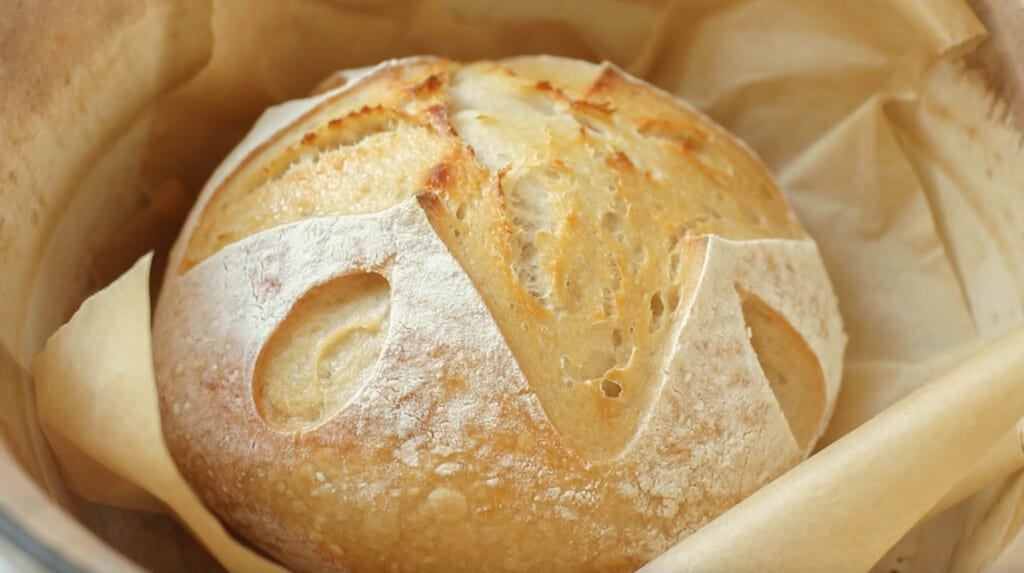
What’s better than freshly baked, crusty, artisan, sourdough bread?
You guessed it. Nothing. Nothing is better.
Especially when it’s sliced up and served with butter, cozied up alongside skillet pork chops or a roasted chicken.
Once you have the flavor of sourdough, it’s hard to go back to its unfermented counterparts. Except, I highly recommend this easy einkorn sandwich bread.
The flavor from the fermented grains adds an extra dimension: sour. Hence, the name sourdough. Yet, somehow, this dimension is absolutely mouthwatering and addictive.
When I’m kneading and folding the dough between my hands, I like to imagine the generation of mothers before me creating bread to feed their own children.
These days, there is such a disconnect from our food. Most people are entirely unaware of how our food is grown, raised, or otherwise made. Little is known of even the ingredients used.
Recipes like this artisan sourdough bread seem daunting or complicated. But many of the best things in life take time, love, and nurturing.
I promise this isn’t as hard as it may seem. You simply need a little time and patience.
This is just like my whole wheat sourdough loaf recipe, but without the oil and honey, and it’s baked in a Dutch oven. I eliminated the oil to step up the crispiness, and I used a proofing basket to make this a more artisan-style loaf.

Benefits Of Sourdough
Sourdough has many benefits. From better digestion to better nutrient absorption, it’s easy to see why it has become a popular ‘trend’.
Sourdough is the process of fermenting grains, allowing the natural yeasts to raise the bread and break down the anti-nutrients.
The anti-nutrient, phytic acid, breaks down with fermentation, increasing nutrients like folate, while helping other nutrients to be more bioavailable.
The fermentation process in sourdough bread and other sourdough products helps lower the amount of gluten present, and helps increase the digestibility of the grains. (source)
This post contains affiliate links, which means I make a small commission at no extra cost to you. See my full disclosure here.
FAQ:
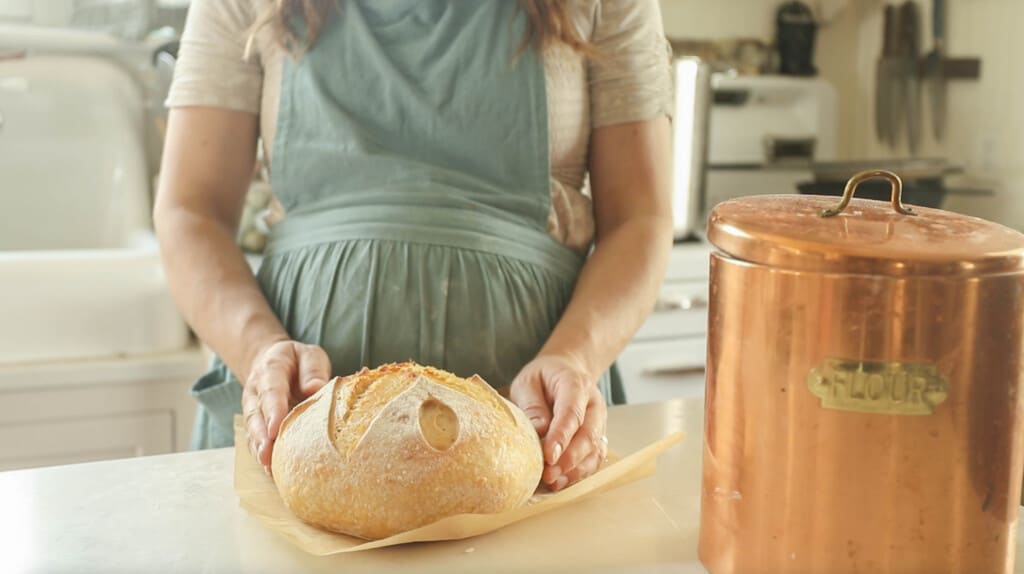
Due to better digestibility and more bioavailability of naturally-occurring nutrients in the grains, sourdough is a better choice than typical bread.
This can be made with all-purpose flour, bread flour, and also freshly milled whole grain.
If you use whole wheat flour, you may need to use a little less flour.
You can even use einkorn flour, but you may need more flour and make sure to follow the einkorn baking rules I discuss here.
‘Artisan’ bread refers to fresh, small batch bread – crafted using traditional methods and natural ingredients.
A boule refers to a round loaf of crusty bread (source)
In order to make a delicious loaf of sourdough bread, you need to use an active starter that has been fed within 4-12 hours before using. When you feed your starter, it should double or triple in size. It should also pass the float test.
Take a spoonful of your active starter and drop it into a cup of water. If it floats, then it is ready to use for bread.
Wrap the bread with beeswax wraps, or in a plastic ziplock bag, and store for up to two weeks at room temperature.
Fermented whole grain bread keeps longer than unfermented whole grain bread at room temperature. This is because the fermentation process makes the bread less susceptible to mold and fungus. The same scientific principles that make sauerkraut and lacto fermented salsa keep for several months are at work in the sourdough bread.
For longer storage, you can also keep it in the fridge or freezer.
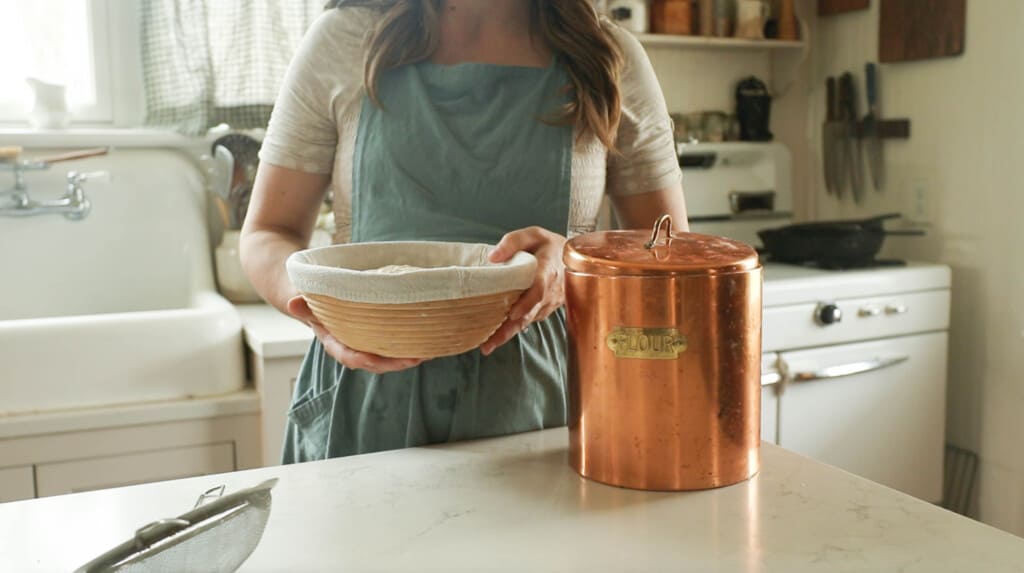
Sourdough Boule Ingredients:
Active sourdough starter – This is a sourdough starter that has been fed 4-12 hours before starting the dough. It has about doubled in size and will pass the float test.
Water – Preferably filtered water.
Salt – I like to use sea salt or pink Himalayan salt. I try to stay away from regular table salt. Iodized salt may leave a bitter taste in the bread.
Unbleached all-purpose flour – I like to use organic all-purpose flour since it doesn’t contain folic acid, a synthetic form of folate that may not be beneficial for a good portion of the population. It’s a whole thing. Bread flour can also be used.
Tools you may need:
Large mixing bowl
Scoring tool – such as a lame, razor blade, or sharp knife.
Banneton basket (optional) Could also use a basket or bowl lined with a tea towel.
Large glass bowl
Measuring cups and spoons
Bench scraper
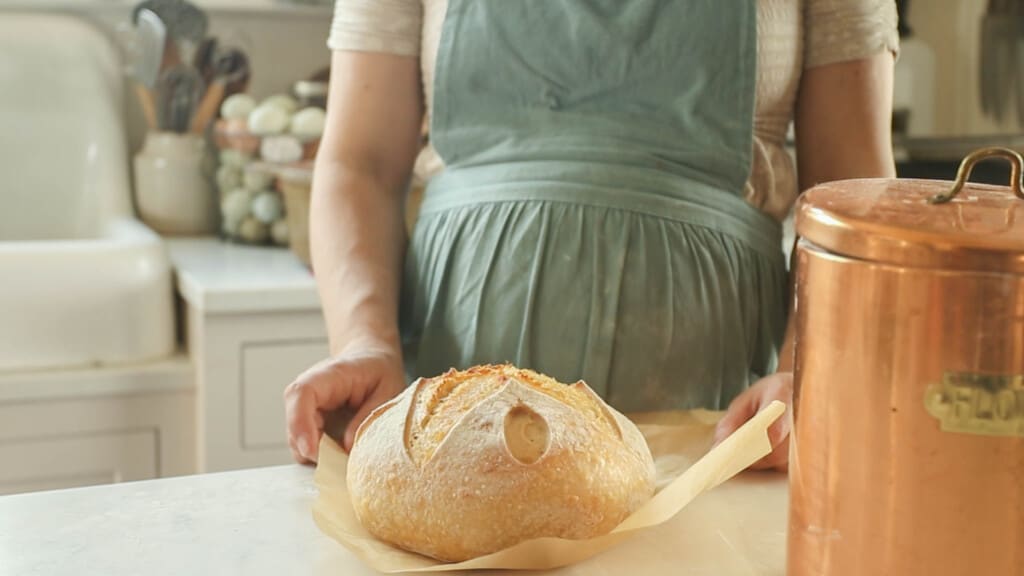
How To Make Artisan Sourdough Bread

Knead all the ingredients in a stand mixer until stretchy and pulling away from the sides of the bowl. The original recipe called for this method. I now use the stretch and fold method, which is included below.
- It should pass the ‘windowpane’ test. This is when you can take a small piece of dough between your fingers and stretch it out. If the gluten is formed properly, you should be able to stretch it out into a thin layer that you can see through.
- If it doesn’t pass this test and is breaking apart, then place it back into the stand mixer and knead for a few more minutes. You could also do this by hand, but it takes a little more time.
If you do not have a stand mixer, you can use the stretch and fold method.
Add dry ingredients to a large bowl. Add in the sourdough starter and water. Mix until a shaggy dough forms. Cover and let the dough rest for 15-30 minutes.
Grab the edge of the dough and pull up stretching it out as you pull upwards.
Place dough that is in your hands back into the center. Turn the bowl about a quarter turn and complete another stretch and fold. Repeat the stretching and folding two more times. Cover.
First 3 stretch and folds – every 15 minutes.
Last 3 stretch and folds – every 30 minutes.
Cover with a tight lid, damp towel, or cling wrap.
Bulk Ferment
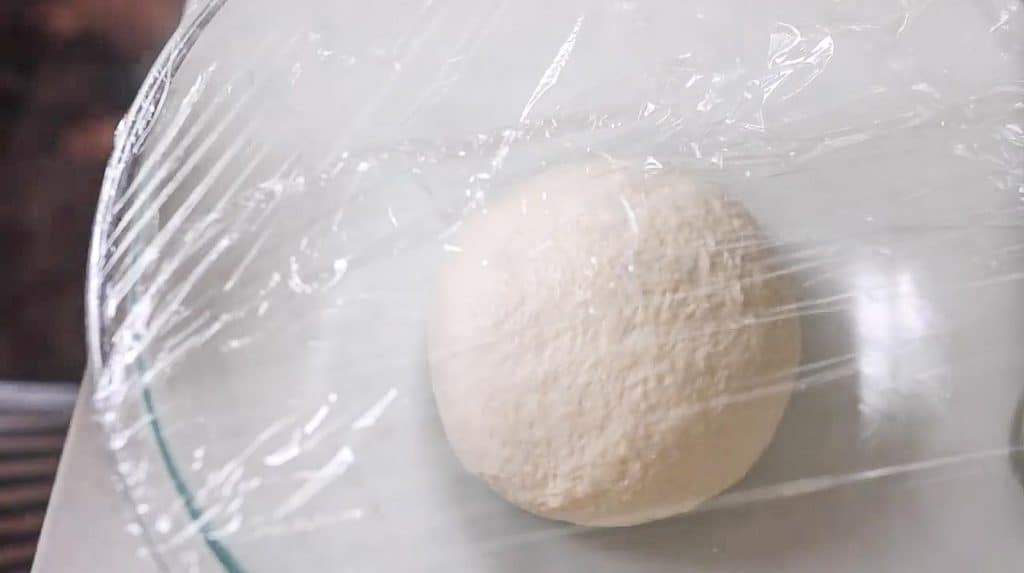
Place the dough in a large, oiled bowl (I like to use olive oil) and cover bowl. Cover with plastic wrap, beeswax wraps, or something that is airtight to prevent the dough from developing a hard crust.
Allow to ferment for 8 to 24 hours in a warm place. If you are gluten sensitive, you may need that extra fermentation for digestion. This is a delicate balance as you don’t want the dough to ferment too long causing an over-fermented mess. It should at least double in size.
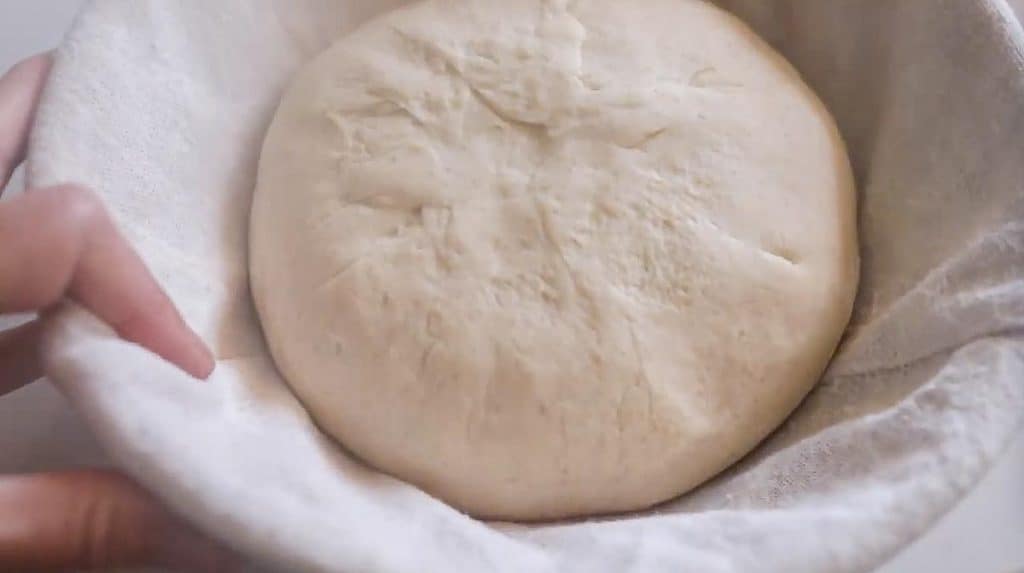
Shaping A Boule
The next day, punch down the dough, turn the dough onto a clean and lightly floured work surface.
Shape it into a round shape, by spinning it towards you and pulling against the counter. Turn over and pull the edges into the center pinching together. This creates tension which gives you a springier final loaf.
Place the dough ball in a banneton basket seam side up.
Allow to rise a second time until doubled – about two to four hours, depending on temperature of house and the maturity of your starter. Or 12-15 hours in the fridge (it will not look like it has risen much, but I promise it will still work).
Preheat oven to 500 degrees with a cast iron Dutch oven inside for an hour.
Sourdough Boule Scoring
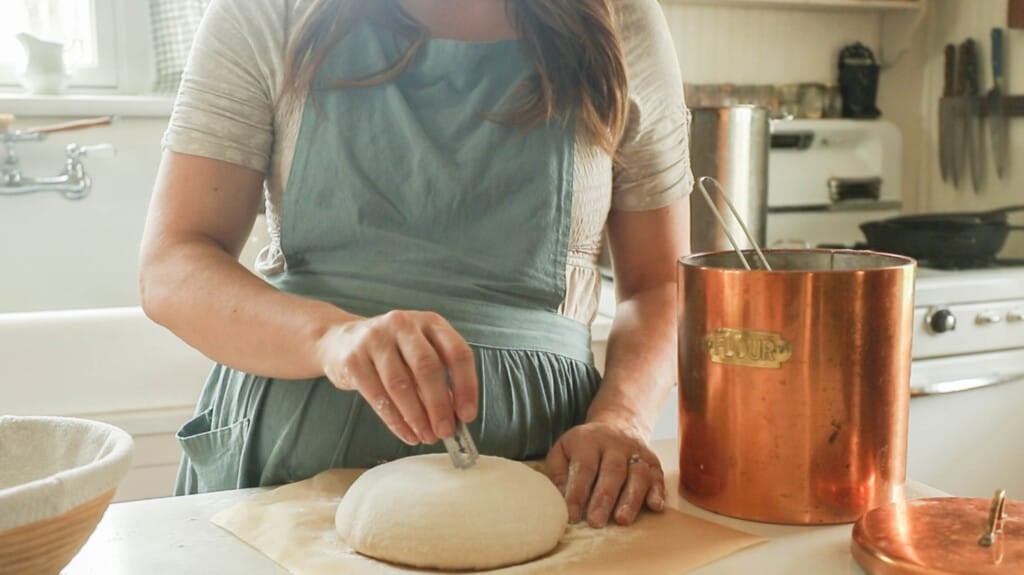
Turn the dough out onto a piece of parchment paper. This just makes it so much easier to lift into the Dutch oven and prevents any sticking.
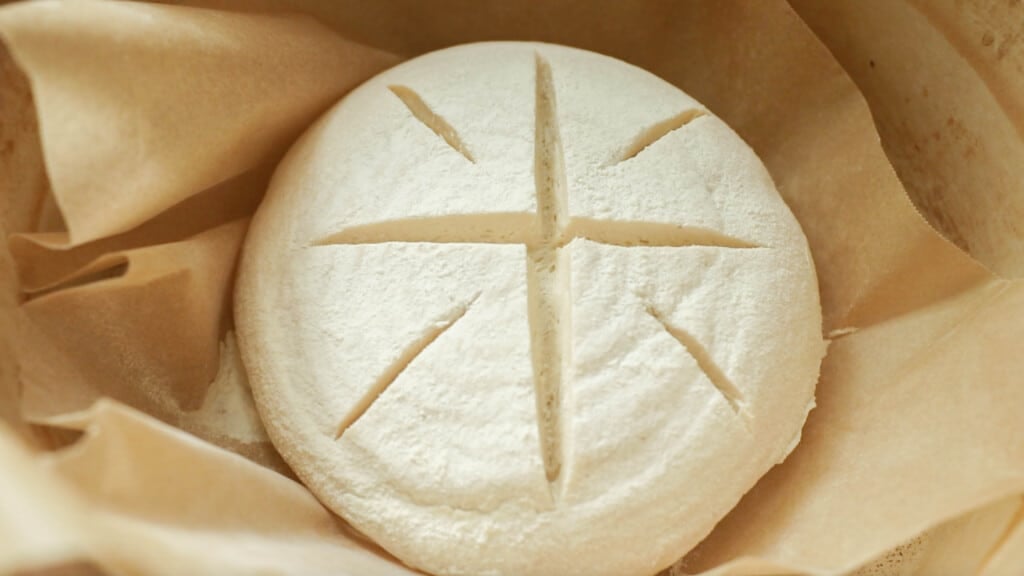
Sprinkle with flour (use rice flour if you cannot tolerate unfermented grains) and score with a pretty scoring pattern or just a simple slash on top of your loaf to give the bread room to expand. Find my favorite scoring patterns here.
Place into the preheated Dutch oven (parchment paper and all).
Optional: Add steam and spray top for a crustier exterior. If you do not have a dutch oven, you can bake your boule on a baking stone, pizza stone, or sheet pan, but in order to achieve that crusty exterior, you will need to add a lot of steam.
This can be done by spraying the top with water, and/or adding a couple of ice cubes to a baking dish in the bottom oven rack of the oven.
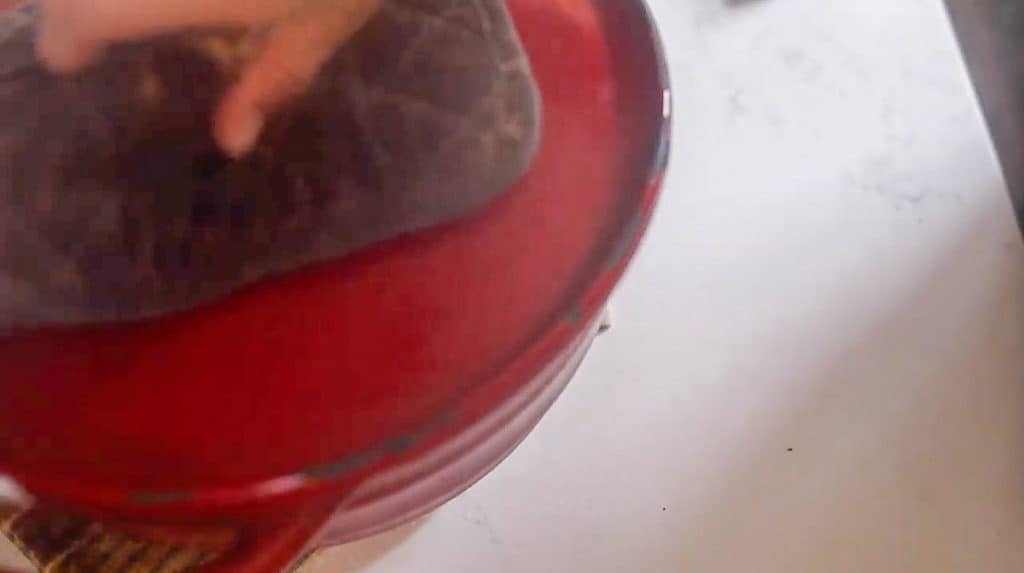
Bake 20-30 minutes with the lid on. Remove the lid, reduce heat to 450, and bake for an additional 20 minutes.
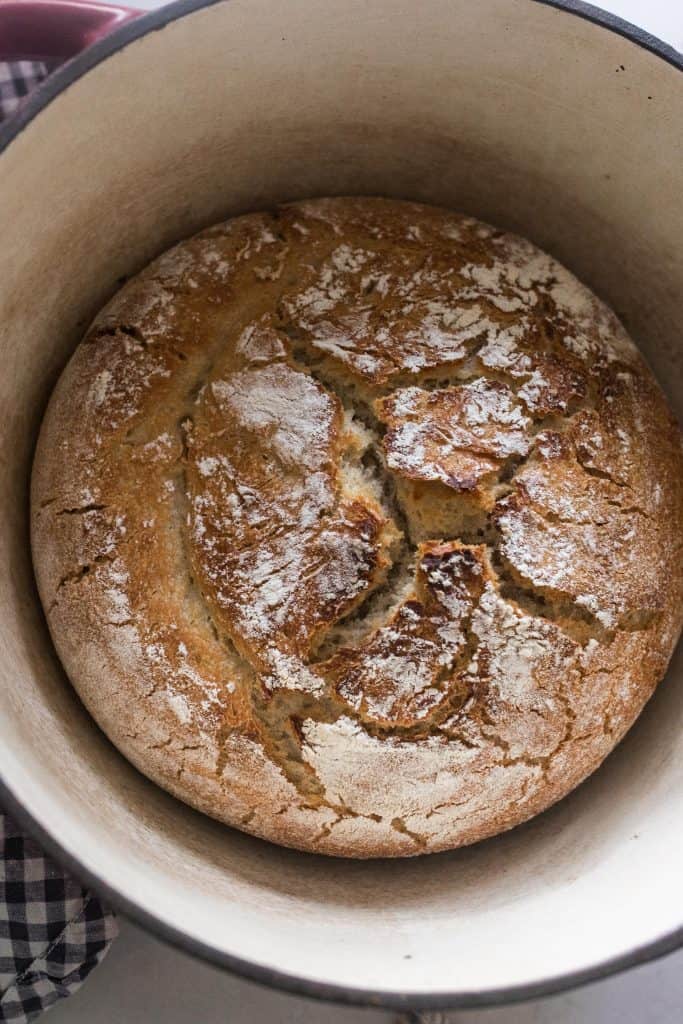
Examples Of Baking Time
10 am: Feed sourdough starter. If your sourdough starter is in the fridge, you will want to feed it at least two times before baking bread.
3-9 pm: Check if the sourdough starter is ready for use. It should be bubbly and at least double or triple in size. If you take a small amount and drop it in a glass of water, it should float.
3-9 pm: In a stand mixer with a dough hook, place flour, salt, active sourdough starter, and water. Knead for 5-10 minutes until the dough is stretchy and pulls away from the side of the bowl. Place in a large oiled bowl and cover. Or start the stretch and fold method.
8 am the next day: Punch down dough, shape in the glass bowl, and place in a banneton basket. Allow to rise until doubled (about 2-4 hours depending on temp of house). Or place in the
10 am: Preheat oven to 500 degrees. Place a Dutch oven, with a lid on it, inside the oven while it preheats.
11 am: After the Dutch oven has been preheating for 1 hour, place sourdough bread dough onto parchment paper, dust with flour, and score.
12 pm: Place dough in a Dutch oven and cover with a lid. Place it in the oven and bake for 20 minutes. Remove the lid, reduce heat to 450, and bake for 20 more minutes until the bread is golden brown.
Allow it to cool and then slice.
Find More Of My Sourdough Favorites:
- Sourdough Banana Bread
- Sourdough Chocolate Rolls
- No-Wait Sourdough Recipes
- Sourdough Ciabatta Bread
- Sourdough Buns
Artisan Sourdough Boule

Ingredients
- 1 cup sourdough starter
- 1 1/4 cups water
- 2 teaspoons salt
- 4 cups all-purpose flour
Instructions
- Knead all the ingredients in a stand mixer until stretchy and pulling away from the sides of the bowl. It should pass the ‘windowpane’ test. Or start the stretch and fold method.
- If it doesn’t pass this test and is breaking apart, then place it back into the stand mixer and knead for a few more minutes.
- Place in a large, oiled bowl and cover with plastic wrap, beeswax wraps, or something that is air tight.
- Allow to ferment for 8 to 24 hours in a warm place or until doubled.
- The next day, punch down the dough, shape it, and put in a banneton basket. Allow to rise until doubled (about two to four hours, depending on temperature of house). Or place in the fridge for 12-15 hours.
- Preheat oven to 500 degrees with cast iron Dutch oven inside for one hour.
- Turn the dough out onto parchment.
- Optional: Sprinkle with flour and score with a pretty scoring pattern.
- Place into the preheated Dutch oven (parchment paper and all).
- Optional: Add steam and spray top for a crustier exterior.
Bake 20 minutes with lid on. Remove lid, reduce heat to 450, and bake an additional 20 minutes.
Notes
- If you are gluten sensitive and you need that extra fermentation for digestion, then I suggest letting it ferment for 24 hours.
- I highly recommend baking the bread on parchment paper. It just makes it so much easier to lift into the Dutch oven and prevents any sticking.
- Make sure to cover the dough with plastic wrap or beeswax wraps, something air tight to prevent the dough from prematurely developing a crust.
- Grab the edge of the dough and pull up stretching it out as you pull upwards.
- Place dough that is in your hands back into the center. Turn the bowl about a quarter turn and complete another stretch and fold. Repeat the stretching and folding two more times. Cover.
- First 3 stretch and folds – every 15 minutes.
Nutrition
Nutrition information is automatically calculated, so should only be used as an approximation.



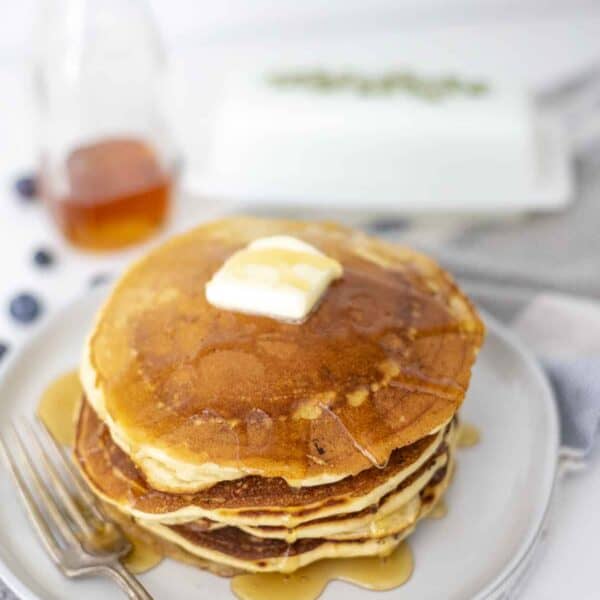






At what speed do you mix the dough and how long does it usually take for it to come together?
I mix it at level 2 and it takes about 10 minutes or so.
I have been trying sourdough recipes for weeks with my starter, and my dough is always sticky. It rises more than double during bulk fermentation, but I can never shape it because it’s so sticky and it never rises in the oven. I found your recipe and this is the first time the dough was not too wet. I didn’t use a mixer, but mixed the ingredients, let it sit for an hour and then did 4 sets of stretches and folds every 30-45 minutes. Although I wasn’t able to stretch it as much as I usually can. It seemed stiffer. (I missed your instructions about 6 sets). Now that the stretches and folds are done, it will ferment at room temp overnight, about 8 hrs. Fingers crossed I can shape it in the morning! Thank you for an easy to follow recipe!
I hope it turns out great!
It was my first successful loaf! I think it might have been a little over proofed (12 hours and more than double in size). I’m guessing it probably doesn’t need that long. But it had great oven spring and tasted great! I’m definitely using your recipe again in a few days! Thanks again!
Woohoo! So glad you enjoyed it!
What is the difference in the loaf between this recipe and your no knead loaf? I’ve been having great success with the no knead but wonder if I’m missing something not making this recipe. Does this step it up a notch?
This recipe requires more stretch and folds for a more open crumb!
Can you use whole wheat bread flour or hard white wheat berry?
I would recommend using this recipe if you want to use whole wheat: https://www.farmhouseonboone.com/how-to-make-whole-wheat-sourdough-bread
I am finding I have to kneed this dough a very long time to get it to pass the windowpane test, is that normal? Also, my bread keeps burning on the bottom! I use a Le Cruset cast iron and set a timer, it has yet to turn out once. 🙁
Yes! It can take a long time, why the stand mixer is nice. You could also try the stretch and fold method. For the burning bottom, maybe try to reduce the heat in your oven to 450.
To prevent loaves from burning on the bottom, put a cookie sheet on a rack under the rack you are putting your cast iron pan on. My loaves turn out perfect now.
Great tip!
I had this problem in my dutch oven at first! I ended up folding a bit of foil and fitting it to the bottom of the pan, my bread is now perfect evey time. I still use the parchment too
I throw flour in my Dutch oven and set my oven to 475 for the entire baking. This yields the perfect loaf!
Can the initial mixing of the dough be done in a bread machine?
That type of kneading will result in a different type of crumb. It will be more tightly closed rather than the nice open crumb that artisan bread has.
Whatcan i use instead of a banneton basket?
TIA
A round bowl with a tea towel will also work.
Question! I’m currently in process of making this recipe now and I’m within the first rise window. It has been about 10ish hours and I would like to go the full 24 for the fermentation (I like a more tart loaf) but it has definitely already doubled; surprisingly I might add as my house is quite cool today. Should I go ahead and wait the full 24 for full fermentation or should I punch the dough down now and proceed with the instructions? I understand this probably won’t be answered in time, but for future loaves… 🙂 Thanks!
I would probably punch it down and shape. You can leave it in the fridge for the second fermentation for a few days for longer fermentation with less of a risk of over fermentation.
I tried this recipe the other day and I was a bit worried that the dough was so stiff. I added rosemary and homemade garlic powder to the mix. Mine doubled in size in about 6 hours. In shaping I put olives into my bread as an inclusion. Turned out to be an awesome boule. Next time I am going to play around with the flour and either use wheat or some rye flour in my mix. I also want to play around with some other inclusions. This is a great recipe when you do not have the time to do all the normal process.
Love your additions! Thanks for sharing!
Made sourdough bread for the first time 10/1/2023. I used this recipe. The bread was awesome. I truly appreciate this recipe using the stand mixer; I have pain and difficulty using my hands. On step 5, I merged steps 7,8,9 from your Same Day Sour Dough recipe; I needed those specifics. Your YT videos are so helpful and together with these instructions, really helped me push through my fears and bake a beautiful and delicious loaf. Blessings.
I’m so glad you found something that works for you!